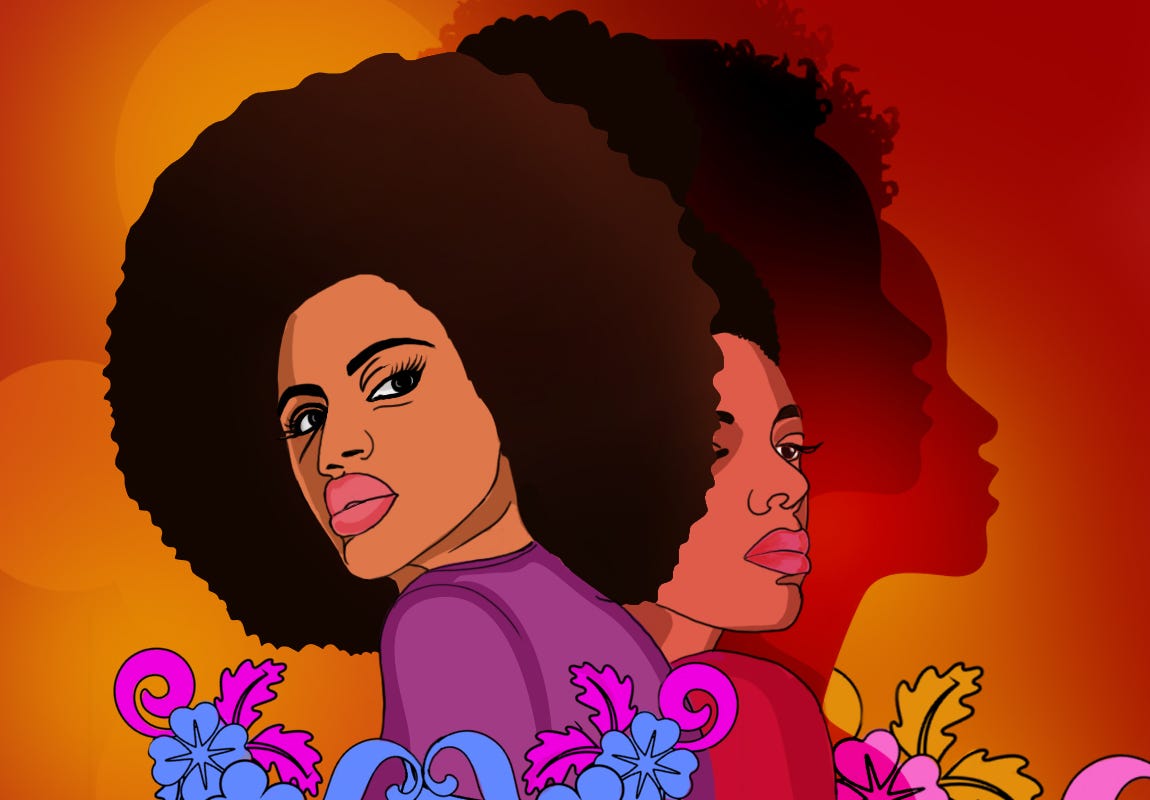During the 1970s, black feminist activists, many of whom were LGBTQ, developed a framework to broaden the definition and scope of feminism. They also published many ground breaking works that highlighted the importance of the dynamics at work in the final decade of 20th century and the first decade of 21st century feminist and social movements. It helped to expose the interconnected system that define a black woman’s life. This system later came to be known as ‘intersectionality’, a term coined by Kimberlé Crenshaw, an American professor of law and a civil rights activist. She defined intersectionality as “the interconnected nature of social categorisations such as race, class, and gender as they apply to a given individual or group, regarded as creating overlapping and interdependent systems of discrimination or disadvantage.”
Over the major course of its existence, feminism mainly focussed on the problems experienced by white, middle-class women.
The history of feminism is often discussed in terms of waves. According to the article Four Waves of Feminism by Martha Rampton published in Pacific University Oregon magazine, the first wave of feminism took place in the late 19th and early 20th centuries, focusing mainly on suffrage. The second wave, which began in the 1960s and continued to the 1990s, took place in the context of anti-war and civil rights movement. During this phase, women raised their voice for sexual and reproductive rights. The third wave, which started in the mid-1990s, was influenced by post-colonial and post-modern thinking The fourth wave is a more recent one, and is said to have started around 2012. It focusses on sexual harassment, body shaming and rape culture, among other problems, that women face in society.
Over the major course of its existence, feminism mainly focussed on the problems experienced by white, middle-class women. It lacked diversity, as most feminists ignored the fact that women from minor classes faced far more discrimination than women who belonged to the elite or middle class of society. They failed to address the issues of race, sexuality and ableism.
In the article, What is "Intersectional Feminism"? published in Denison, Taylor Hawk cites a suitable example to illustrate the above issue. It is commonly and widely advertised that a woman earns 78 cents to a man’s dollar, but this is the statistic for white women. At the same time, a black woman earns 64 cents to a white man’s dollar, and a Hispanic woman only 56 cents. Intersectional feminism considers all these disparities and takes into account the different ways each woman experience discrimination.
In an interview with Time magazine, scholars Linda Carty and Chandra Talpade Mohanty said that “we are actually living at the intersections of overlapping systems of privilege and oppression.” To give us a better understanding of this, they cited a suitable example: think of a heterosexual woman and an LGBT African American woman who are both from the working class. Even when they are working within the same structure that regard them as poor, they experience different levels of discrimination. While the white woman experiences gender or/and class discrimination, the other has to face homophobia and racism.
Brazilian women argued that feminism is ‘Eurocentric’ as it doesn’t account for their local problem like health problems, racial issues and the difficulties they face while looking to get a job.
“Sisterhood is powerful” was one of the most popular feminist slogans in the 1960s and 1970s. This phrase has been questioned ever since its inception. American poet Audre Lorde argued that this phrase glossed over the difference of race, sexuality, class and age. She was supported by Ien Ang, an Australian of Chinese descent suggesting that break in communication between feminists should be accepted as a starting point for more modest feminism. According to both these writers, feminism was dictated by middle class white women who focussed on gender discrimination rather than the class differences and racial discrimination.
In her book Feminism: A Very Short Introduction, Margaret Walters depicts the way Brazilian women looked at feminism. Brazilian women argued that feminism is ‘Eurocentric’ as it doesn’t account for their local problem like health problems, racial issues and the difficulties they face while looking to get a job. Women from third world countries also had to confront additional problems when compared to western feminists. While the women in the west faced problems like sexism, and social and political inequalities, women in the third world countries had to deal with the problems that were deep rooted in the form of local beliefs and customs. Colonialism and neo-colonialism also have had a significant impact on the lives of women in third world countries.
In a society where some women are treated more harshly than others because of their race, intersectional feminism is of utmost significance. In her article What is "Intersectional Feminism"? published in Denison, Taylor Hawk explains how intersectional feminism face its major challenge in the form of ‘white feminism’. The term white feminism refers to describe a type of feminism that overshadows the struggles of women belonging to the minority groups. This holds true to other structures such as caste, class, religion etc.
In its true sense, white feminism is not actually feminism. It fails to recognise the discriminations faced by women who are not white. However, it is important to understand that all feminists who are white are not advocates of white feminism.
Women across the globe face different types of problems. The issues vary from place to place. It is important to understand that all women do not face same levels of discrimination just because they are women. This is the core of intersectional approach. Everyone experiences discrimination and gender inequality differently, and an intersectional approach will help the fight for equality to be more inclusive, by sharing the voices of women belonging to various strata.
Now put on your thinking hats and think about the following questions for a couple of minutes.
How would you describe the term “intersectional feminism” to your students?
Can you think of the reason why Brazilian women called feminism “Eurocentric”?
Write down your thoughts and discuss them with your students, children and your colleagues. Listen to their views and compare them with your own. As you listen to others, note how similar or different your views are to others’.
Thank you for listening. Subscribe to The Scando Review on thescandoreview.com.
Happy Teaching!













Intersectional Feminism